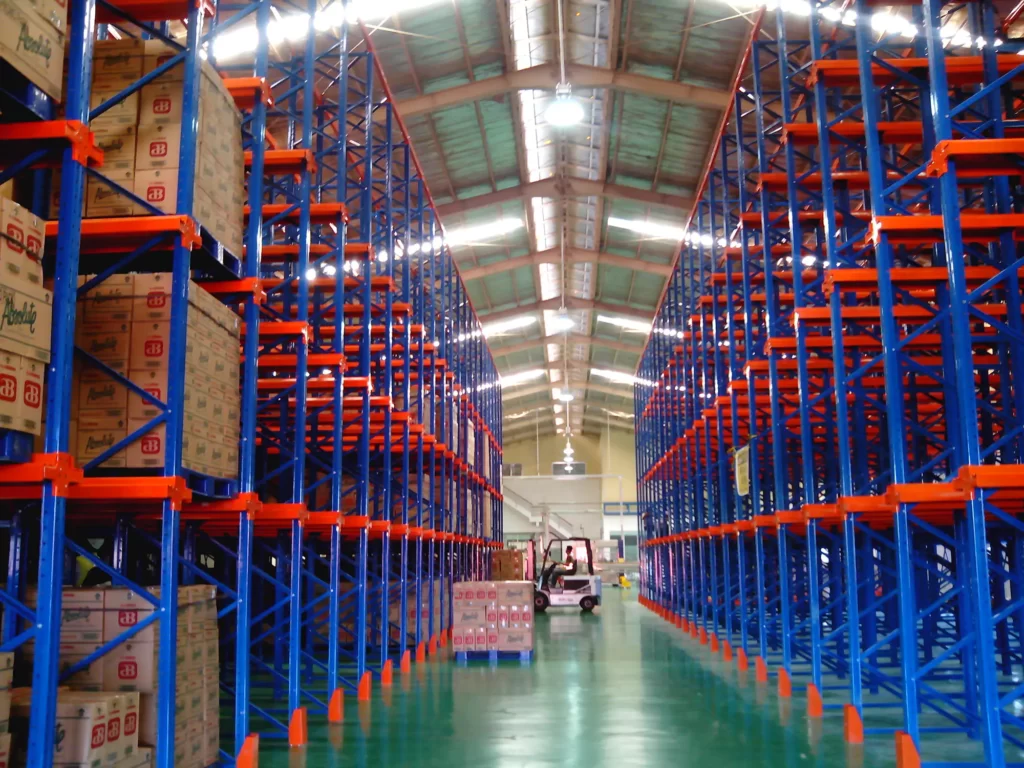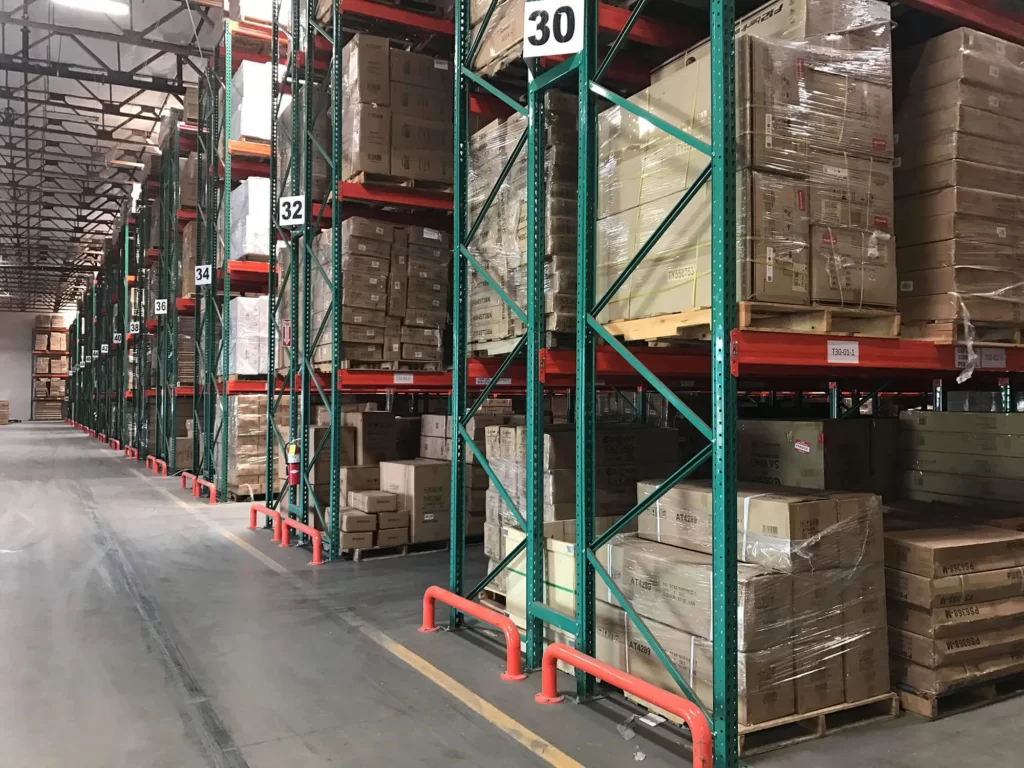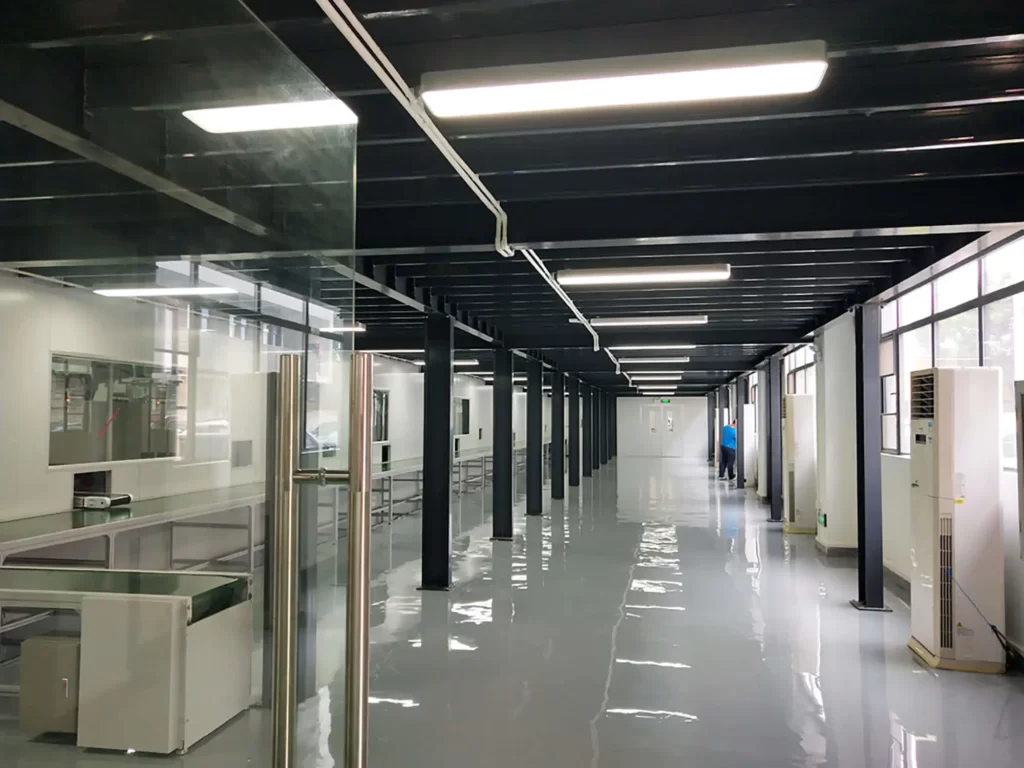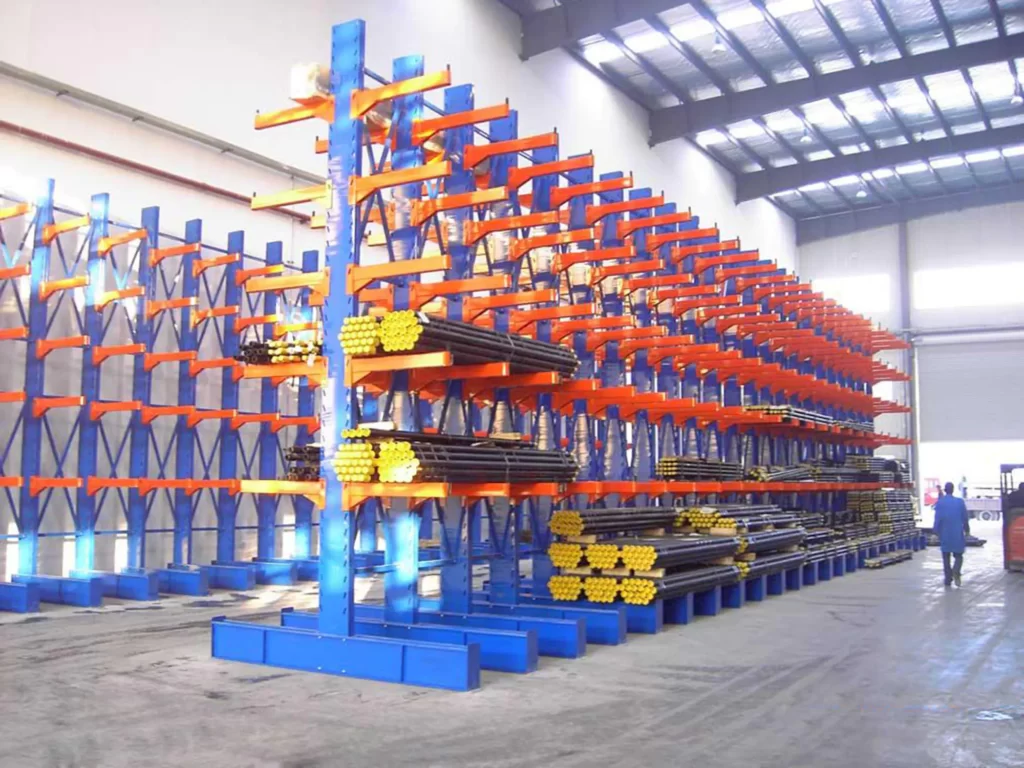Warehouses are an important pillar for businesses dealing with the supply chain—they serve as storage spaces for raw materials, finished products, and other supplies. But it is not just the existence of warehouses that is important; their organization and management are equally important.
A well-organized warehouse can increase productivity, lower costs, and higher customer satisfaction. On the other hand, a disorganized warehouse can result in lost inventory, delays, and safety hazards.
So, how to organize a warehouse?
That is what we will discuss in our today’s article.
We will cover topics such as:
- How to analyze the current system
- How to create a layout plan
- Establishing inventory control systems
- How to organize storage areas
- How to improve material handling
- Implementing safety measures
- How to maintain the warehouse
And so on.
Stay with us as we will discuss everything about optimizing your warehouse and improving the efficiency of your business in the lines below.
How to Organize a Warehouse?
Organizing a warehouse is not a linear task. On the contrary, you will have to go through several phases, from layout planning to inventory control measures to safety. Read on as we discuss everything you need to know about organizing your warehouse the right way.
1. Analyzing the Current Warehouse System
Before organizing your warehouse, you have to analyze your current system first. This step will help you understand the existing layout, identify discrepancies, and develop a workable reorganization plan.
Below are a few steps to follow when analyzing your current warehouse system:
a. Evaluate the current layout
When assessing your warehouse’s current layout, note the location of each item, the pathways, and the workstations. Determine whether the current layout is efficient and easy to access all warehouse areas. Look for congested or underutilized areas. Measure the area and make a note of any impediments to the flow of materials and goods. Considering the ceiling height and the available vertical storage space is also critical.
b. Identify inefficiencies
Inefficiencies in the warehouse can cause delays, bottlenecks, and mistakes. The layout, storage methods, equipment, or processes can all contribute to inefficiencies. Examine the flow of goods and materials, and note any areas where employees are expending much time or effort. Look for areas where inventory is not moving as quickly as it should or where employees are frequently backtracking. Examine the movement of employees, machines, and inventory, and note any congestion or bottlenecks slowing the process.
c. Develop a plan for reorganization
After assessing the current layout and identifying inefficiencies, it’s now time to plan the reorganization part. Consider the type of inventory, the frequency of use, as well as the size and weight of the items. Based on that, determine the best placement for each item and sketch out the new layout.
Also, find out what changes will be required to improve efficiency and identify areas for improvement. When developing a new plan, make sure to consider the need for easy access, clear pathways, and adequate storage space.
d. Get input from employees
It is critical to include employees in the evaluation process. Request feedback on the current system as well as suggestions for improvement. They might have ideas or insights that you haven’t considered. Employees working in the warehouse on a daily basis will likely have good ideas for improving the layout or processes.
This will also help increase employee inclusion and make them more invested in the warehouse and overall business success.
2. Creating a Layout Plan
After you are done with the first part, it’s time to create a layout plan for your warehouse. The layout plan will help you optimize your space, reduce inefficiencies, and improve the overall efficiency of your warehouse.
Here are some practical steps to follow when creating a layout plan:
a. Consider the type of inventory
It is important to take into account the type of inventory that will be stored in the warehouse when developing a layout plan. The type of inventory will influence the storage methods used as well as the storage solutions required. For example, you may need to use a temperature-controlled environment if you are storing perishable items. You may need to use special packaging or handling methods when storing fragile items. When designing your layout, keep the unique characteristics of your inventory in mind.
b. Apply the 80-20 rule
In warehouse management, the 80/20 rule, also known as the Pareto principle, helps managers focus their efforts and resources on the most critical aspects of their operations. You can prioritize your resources and optimize their operations to maximize productivity and profitability by identifying the top 20% of high-activity or high-value inventory items. The 80/20 rule can be used in various situations, including inventory management, picking strategies, and slotting.
For example, when organizing your warehouse, you can use the 80/20 rule to identify your best-performing products and allocate more storage space and resources to them. You can also apply this principle to create more efficient picking strategies prioritizing the most critical inventory items while decreasing labor costs.
c. Determine the flow of materials and goods
The movement of materials and goods through your warehouse is critical to its efficiency. Draw the path that materials take from when they enter the warehouse to when they leave. Determine the locations of materials that are stored, processed, and shipped. Optimizing the flow of materials and goods is critical to reducing inefficiencies and delays in the warehouse.
d. Determine the placement of workstations
Consider workstation placement when creating your layout plan. Workstations such as packing, labeling, and inspection stations should be located in an area that is easy for employees to access and close to material storage areas. This will help reduce employees’ time moving between workstations and materials, improving warehouse efficiency overall.
e. Plan for safety
Safety should be a top priority when creating your layout plan. Identify potential safety hazards, such as areas with heavy traffic, blind corners, or low visibility. Make sure that these areas are well-lit and marked with warning signs. In addition, plan for emergency exits and evacuation routes.
Ensure that all employees are trained on safety procedures and that safety equipment, such as fire extinguishers, are readily available throughout the warehouse. We will discuss warehouse safety in detail in the following sections.
f. Plan for future growth
When creating your layout plan, planning for future growth is important. Determine the amount of space that will be needed as your business grows, and plan for additional space accordingly. Will you need to expand or reconfigure your warehouse as your company grows? Ensure that the layout plan is flexible and can be easily modified as your business evolves. This will help to ensure that your warehouse can accommodate future growth without significant disruption to operations.
g. Consider the use of technology
By automating processes like inventory tracking and order fulfillment, technology can help your warehouse become more efficient. Consider using technology to improve the efficiency of your warehouse when designing your layout. Determine the areas where technology will be most effective and required. You may use barcode scanners, conveyor systems, and automated storage and retrieval systems.
3. Establishing Inventory Control Systems
Once you’ve decided on a warehouse layout, you’ll need to set up inventory control systems to help you manage your inventory effectively. Inventory control systems assist you in keeping apprised of inventory levels, monitoring stock movements, and ensuring you have enough stock to meet customer demand.
Here are some steps to take when setting up inventory control systems:
a. Determine inventory management methods
When establishing inventory control systems, it’s essential to determine the inventory management methods that you will use. The two main inventory management methods are periodic inventory management and perpetual inventory management.
Periodic inventory management involves physically counting inventory at regular intervals, while perpetual inventory management involves continuously tracking inventory levels through the use of technology. Determine which method is best for your business based on your inventory levels and your available resources.
b. Implement a barcoding system
As discussed in the lines above, implementing a barcoding system effectively tracks inventory movements and levels. Barcoding systems allow you to quickly scan items and update inventory levels in real-time. This helps you to maintain accurate inventory levels and avoid stockouts or overstocking.
c. Use inventory management software
Inventory management software can help you track inventory levels and stock movements and produce reports. Such software can also help you identify slow-moving or obsolete inventory, reducing inventory holding costs and increasing inventory turnover.
d. Establish inventory control procedures
Establishing inventory control procedures is essential to ensuring that inventory is managed effectively. Procedures should include guidelines for receiving, storing, and shipping inventory and for handling damaged or defective items. These procedures should also include guidelines for managing inventory levels and promptly replenishing stock.
e. Conduct regular inventory audits
A core component of keeping your warehouse well-organized is to conduct regular audits—they are important for ensuring that inventory levels are accurate. Audits should be performed on a regular basis to identify any discrepancies between inventory records and actual inventory levels. This can help you identify issues with your inventory control systems and adjust as needed.
f. Train employees on inventory management
The last step in establishing inventory control systems is to train employees on inventory management procedures and use inventory management software. The required training will ensure that all employees are familiar with inventory control systems and can use them effectively. Training should also include guidelines for identifying and reporting inventory discrepancies and for maintaining accurate inventory records.
Following the steps mentioned above, you can establish inventory control systems to help you manage your inventory effectively. Effective inventory control systems can help you reduce inventory holding costs, improve inventory turnover, and ensure you have enough stock to meet customer demand—basically, all the things required for organizing a warehouse.
4. Organizing Storage Areas
Once you have established inventory control systems and created a layout plan for your warehouse, organizing your storage areas to maximize space utilization and improve efficiency is important. Here are some practical steps to follow when organizing your storage areas:
a. Group items by category
Organizing your storage areas by category is an effective method. This allows you to quickly and easily locate items and helps to reduce the amount of time employees spend searching for items. Grouping items by category also helps in the identification of slow-moving or obsolete inventory.
b. Use storage equipment
Using storage equipment like shelves, racks, and bins can help you maximize space and improve efficiency. Storage equipment allows you to store items vertically, saving space and reducing clutter. Using storage equipment can also help you cut down on the time employees spend looking for items.
c. Use floor marking
Floor marking is an efficient and effective way to organize your storage areas. Floor marking can indicate traffic flow and safety hazards and designate areas for specific items. This can help reduce employees’ time looking for items and improve warehouse safety.
d. Implement a first-in, first-out (FIFO) system
Using a FIFO system to manage inventory levels and ensure that older inventory is used first is an efficient way to manage inventory. FIFO systems aid in the prevention of obsolete inventory and can also aid in the reduction of waste. Labeling inventory with expiration dates or production dates is critical when implementing a FIFO system to ensure that older inventory is used first.
e. Use vertical space
Using vertical space is an effective way to maximize space utilization in your storage areas. This can be done using tall shelves or racks and storing items in bins or boxes. Using vertical space also means reduced clutter and improved efficiency in your storage areas.
f. Label items
Labeling items is an effective way to organize your storage areas and improve efficiency. Labels must include details such as item names, item numbers, and inventory levels. It can really enable employees to locate items quickly and easily and can also help to reduce the amount of time that employees spend searching for items.
By adhering to these procedures, you can organize your storage areas to improve efficiency and maximize capacity utilization. Managed storage facilities can assist you in minimizing the period of time that employees spend searching for items, improve inventory control, and ensure that you have enough stock on hand to meet customer demand.
5. Improving Material Handling
Efficient material handling is an important part of organizing a warehouse. Material handling refers to the movement, storage, and control of materials within a warehouse. Here are some steps to follow when improving material handling in your warehouse:
a. Use ergonomic equipment
Utilizing ergonomic equipment, such as hand trucks and pallet jacks, can help reduce the risk of employee injuries and improve efficiency. Ergonomic equipment is easy to play with and requires minimal physical exertion from on-site staff. Lastly, using ergonomic equipment can also help reduce the time employees spend moving materials.
b. Implement a cross-docking system
Implementing a cross-docking system can assist warehouse owners in reducing the amount of time materials spend in the warehouse and improving efficiency. Cross-docking is the process of unloading materials from incoming trucks and immediately loading them onto outgoing trucks without storing them in a warehouse. This can also help reduce the risk of damage or loss.
c. Use automation
Using automation techniques—such as conveyors or robotic systems—can improve efficiency and reduce the risk of employee injuries. Automation can be used for tasks such as material transport, loading and unloading, and inventory management, to name a few. Using automation can also help reduce the time employees spend on repetitive and monotonous tasks.
d. Implement a pick-to-light system
Implementing a pick-to-light system can effectively improve warehouse accuracy and efficiency. A pick-to-light system employs lights to direct employees to the appropriate warehouse areas and indicate which items to pick. This can help reduce the risk of errors and the amount of time employees spend looking for items.
e. Train employees
Employee training on proper material handling techniques is important in increasing efficiency and lowering the risk of employee injury. Employees should be trained on how to use equipment safely, handle materials correctly, and follow warehouse procedures. Training should be continuous and updated on a regular basis to reflect changes in equipment or procedures.
By following these steps, you can improve material handling in your warehouse, reduce the risk of employee injuries, and increase efficiency. Efficient material handling can help employees spend less time on manual tasks, allowing them to focus on more important tasks like inventory control and customer service.
6. Implementing Safety Measures
When it comes to organizing your warehouse, safety must be a top priority. Implementing safety measures can help reduce employee injuries, damage to equipment and materials, and other accidents. The following are a few safety tips to follow when implementing health and safety measures in your warehouse:
a. Conduct regular safety inspections
Regular safety inspections can assist in identifying potential warehouse hazards and allow you to take corrective action before an accident occurs. Regular safety inspections should be performed, and any risks identified should be addressed immediately.
b. Use proper signage
Proper signage, such as warning signs and floor markings, can help alert employees to potential hazards and prevent accidents. Signage should be easy to read and placed in areas where it can be easily seen.
c. Provide proper training
Providing proper training on safety procedures and equipment use is an important part of reducing the risk of accidents in the warehouse. Warehouse owners must train staff to use equipment safely, handle materials properly, and follow warehouse procedures.
d. Use proper personal protective equipment (PPE)
Providing proper PPE, such as hard hats, safety glasses, and steel-toed shoes, can help to protect employees from injury. Employees should be trained on how to use PPE correctly and should be required to wear it whenever it is necessary.
e. Implement a safety culture
Implementing a safety culture overall can help create a more organized warehouse. A safety program should include regular safety training, incentives for safe behavior, and a system for reporting and investigating accidents and near-misses.
f. Maintain equipment and machinery
Similarly, you cannot ignore regular maintenance. Proper equipment and machinery maintenance can help prevent accidents and reduce the risk of equipment failure. Equipment should be inspected on a regular basis, and any problems identified should be catered to immediately.
Since maintenance is a core requirement of any warehouse, especially the one aiming to be organized and optimized, we will dedicate the last section only to maintenance.
7. Maintaining the Warehouse
Maintaining a clean and organized warehouse is crucial to ensuring that it operates efficiently and safely. Here are some actional steps to follow to keep your warehouse well-organized and maintained:
a. Implement a cleaning schedule
First of all, start with the basics—clean your warehouse regularly. The cleaning schedule should include a list of tasks that need to be done daily, weekly, and monthly. This will ensure that every part of the warehouse is cleaned and organized on a regular basis.
Maintain a cleaning schedule and post this schedule in a visible location so everyone can see and follow it.
b. Organize inventory
Organizing inventory involves grouping similar items together and labeling shelves with the product name or description. As discussed earlier, a bin location system can also be used to assign a specific location to each product. This system can help employees locate products quickly and easily.
c. Keep equipment maintained
Keeping equipment maintained involves regular inspections and repairs. A maintenance log should be kept for each piece of equipment to ensure that it is inspected and serviced on a regular basis. Employees should also be trained to perform basic maintenance tasks, such as oiling or greasing machinery when required, identify signs of wear and tear, and report any issues to management.
d. Monitor storage areas
Monitoring storage areas involves checking for any signs of damage, pests, or expired products. Any damaged or expired products should be removed immediately. Likewise, pest control measures should also be implemented to prevent infestations.
e. Conduct regular inspections
Do frequent inspections to discover any maintenance issues that require prompt action. All warehouse facilities should be inspected, including equipment, storage areas, and the building’s structure. You can either have an in-house safety team assess your warehouse on a regular basis or outsource the operations to a third-party inspection company.
Conclusion: How to Organize Your Warehouse?
To summarise, warehouse organization entails several phases, including reviewing the current system, developing a layout design, establishing inventory control systems, organizing storage areas, enhancing material handling, adopting safety measures, and maintaining the warehouse. By following these measures, you can establish a warehouse that is secure, efficient, and well-organized, maximizing productivity, lowering expenses, and improving staff morale. While arranging a warehouse might be difficult, it is critical to ensure that your organization performs at peak efficiency.








